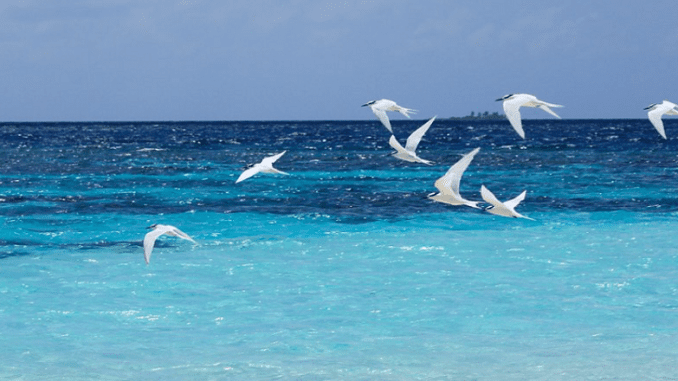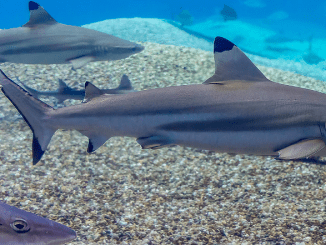
MANILA, Philippines, September 13, 2021 (ENS) – To finance ocean protection projects in Asia and the Pacific, the Asian Development Bank has issued its first dual-tranche blue bonds denominated in Australian and New Zealand dollars.
The funding gap to support healthy oceans is getting wider every year and the scale of the problem requires a leap from small transactions to transformative market deals, the ADB says. “Innovative financial products like blue bonds diversify and expand the investor base, thereby increasing the amount of capital that can be invested in ocean health.”
The A$208 million (around US$151 million) 15-year issue was purchased by the Dai-chi Life Insurance Company and arranged by Citigroup Global Markets Limited.
The NZ$217 million (around $151 million) 10-year issue was purchased by Meiji Yasuda Life Insurance Company and arranged by Credit Agricole CIB. The bonds were issued under ADB’s expanded Green and Blue Bond Framework.
“Having our first Australian dollar 15-year and New Zealand dollar 10-year blue bonds under ADB’s Green and Blue Bond Framework is a new milestone for sustainable ocean finance. The tenor reflects the needs and our long-term support for the sector,” said ADB Vice-President for Finance and Risk Management Ingrid van Wees.
“With our framework, we set a new standard for blue financing in the market that can be replicated,” van Wees said.
The bonds are part of ADB’s Action Plan for Healthy Oceans and Sustainable Blue Economies launched in 2019, which aims to catalyze sustainable investments in Asia and the Pacific by committing to invest and provide technical assistance of at least US$5 billion by 2024.
“The Action Plan for Healthy Oceans and Sustainable Blue Economies is a vital part of ADB’s strategy to expand the necessary support for its developing member countries to invest in healthy oceans, ensure the achievement of SDG 14, and contribute to the security and prosperity of the region,” said Bambang Susantono, ADB vice-president for knowledge management and sustainable development.
Sustainable Development Goal (SDG) 14 addresses “life below water” and is one of 17 SDGs established by the United Nations in 2015.
One example of an eligible project that may be financed by the bond is the Greater Malé Waste-to-Energy Project in Maldives, which will stem the flow of plastics and other wastes to the ocean and reduce greenhouse gas emissions.
Another is the Anhui Huangshan Xin’an River Ecological Protection and Green Development Project in China, which will reduce nonpoint source pollution to the marine environment from “source to sea” by supporting green farming and controlling pesticide and fertilizer use.
ADB’s blue bonds are replicable, scalable, and aim to grow the ocean economy across Asia and the Pacific. The proceeds will finance projects that enhance ocean health through ecosystem restoration, natural resources management, sustainable fisheries and aquaculture, reduction of coastal pollution, circular economy, marine renewable energy, and green ports and shipping.
At the same time, these investments are intended to support sustainable economic growth and jobs for the future.
The blue bond market first emerged in 2018 supported by the World Bank, when the Seychelles issued a US$15 million blue bond.
As one of the planet’s important biodiversity centers, the Seychelles, an archipelago of 115 islands in the Indian Ocean off East Africa, had to balance economic development with environmental protection. Proceeds from the bond were used to support the expansion of marine protected areas, improve governance of priority fisheries, and develop the Seychelles’ ocean economy.
“The bond, which raised $15 million from international investors, demonstrates the potential for countries to harness capital markets for financing the sustainable use of marine resources,” according to the World Bank.
In January 2019, the Nordic Investment Bank followed with its issuance of a SEK2 billion blue bond. To draw attention to plastic waste pollution in oceans, the World Bank launched a blue bond in April 2019 that raised US$10,000,000.
The fourth blue bond issuance was by the Bank of China in November 2020. The dual currency bond raised the equivalent of $942 million towards protecting the oceans. This was the first blue bond from the private sector, the first from a commercial bank and the first from Asia.
Now, the ADB’s expanded Green and Blue Bond Framework has received a Second Party Opinion from the evaluator of green bond investment frameworks CICERO Shades of Green https://cicero.green/ in order to provide investors with confidence that ADB bonds are actually mitigating climate change and protecting ocean health. In 2021, CICERO Shades of Green assessment methodology was the basis for becoming an approved reviewer for Nasdaq’s Green Equity Designations and served as the basis of the first Green IPO launched on Euronext
Developing member countries can adopt ADB’s approach and issue sovereign blue bonds to finance ocean health projects that will both protect vital ocean resources and provide a much-needed economic boost.
Featured image: Flocks of terns fly over an uninhabited island in the Maldives archipelago, July 7, 2016 (Photo by cattan2011)
© 2021, Environment News Service. All rights reserved. Content may be quoted only with proper attribution and a direct link to the original article. Full reproduction is prohibited.



